Explore the hidden habitats of Baltimore’s Inner Harbor
A turtle island, floating wetlands, oyster cages and more are sprinkled throughout the waterfront
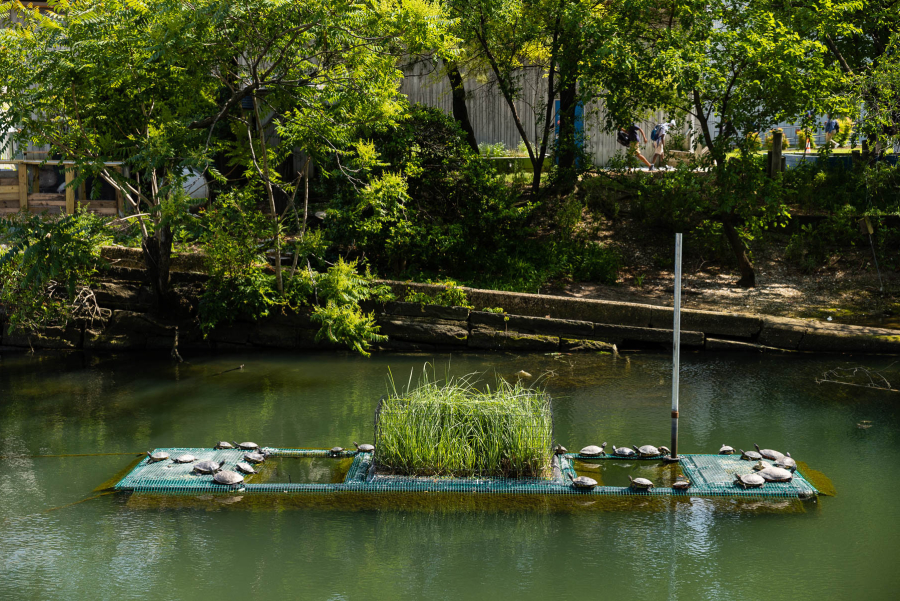
Celebrated as the model for a post-industrial waterfront, Baltimore’s Inner Harbor has much to offer: world-class museums to visit, water taxis and naval ships to board, restaurants to enjoy, and even pop-up ice skating rinks and German-inspired wine villages.
What you might not expect to see much of in this city hub is wildlife.
Decades of industrial waste and sewage pollution have spiked bacteria levels for the branch of the Patapsco River that makes up the harbor, while the lush wetlands that once covered the area are all but gone. By the 1980’s, the Inner Harbor’s reputation had become so poor that when the National Aquarium added benches outside its building, they had them facing away from the river.
“They didn’t want people to look at the water,” said Chelsea Anspach, communications manager for the Baltimore Waterfront Partnership.
The Waterfront Partnership is one of a handful of organizations working to improve the health of the water and generate interest about outdoor recreation. The organization spearheads the “Healthy Harbor Initiative,” which aims to make the area swimmable and fishable through restoration projects, water quality monitoring and education.
Among this work is a surprising collection of “harbor habitats” that the organization maintains in order to improve water quality and provide refuge for wildlife. Bugs, butterflies, ducks—even turtles—are gracing the Inner Harbor thanks to these greenspaces, and when the weather’s right they’re the perfect detour to make with friends and family while spending time in the area.
We’ve got the full list of harbor habitats here for you, along with information on where to find them and what to look for when visiting. Though a relatively small step, these sites are an inspiring reminder of what once was, and what could be, in waterfront communities like Baltimore.
Floating wetlands
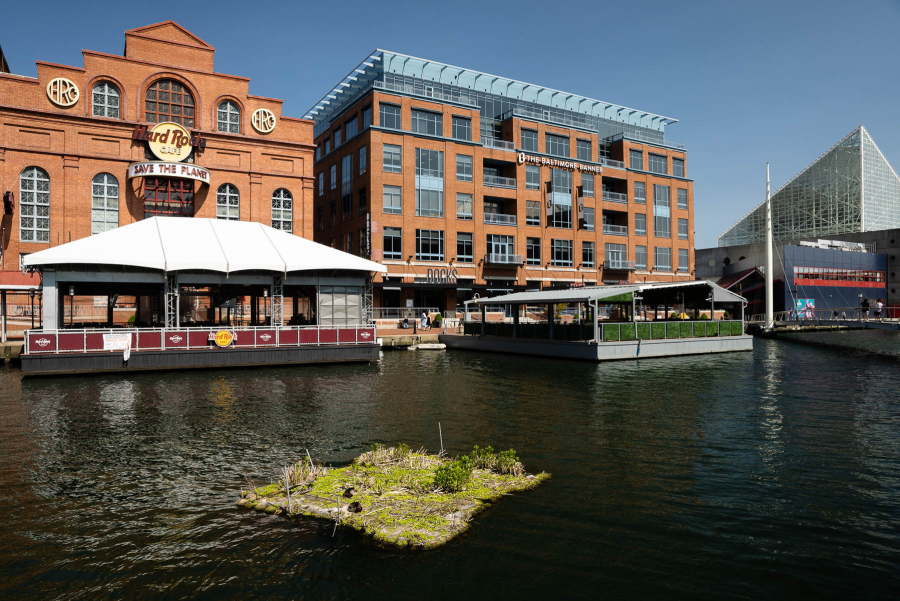
Starting at the National Aquarium, turn your attention to the canal of water that separates Pier 3 (where the aquarium is) and Pier 4 (where Hard Rock Cafe is). Here, you’ll see two “floating wetlands” that were put in the water to filter out harmful nutrients and add oxygen.
The larger wetland closest to the promenade is 200 square feet and has been in the harbor since 2015. The second, which can be found directly under the walking bridge connecting piers, is a slightly more advanced prototype that includes a channel of moving water through the center and an aeration system.
“What this is doing is mimicking a Chesapeake Bay wetland,” said Anspach.
Much like a traditional wetland, these installations are cleaning the water and providing habitat for insects and birds. A third floating wetland can be found farther west, still along the water, on the Bond Street Wharf in Fells Point. The National Aquarium envisions a waterfront campus full of these floating wetlands that people can kayak and walk through, and where a wide variety of wildlife can visit.
Oyster cages
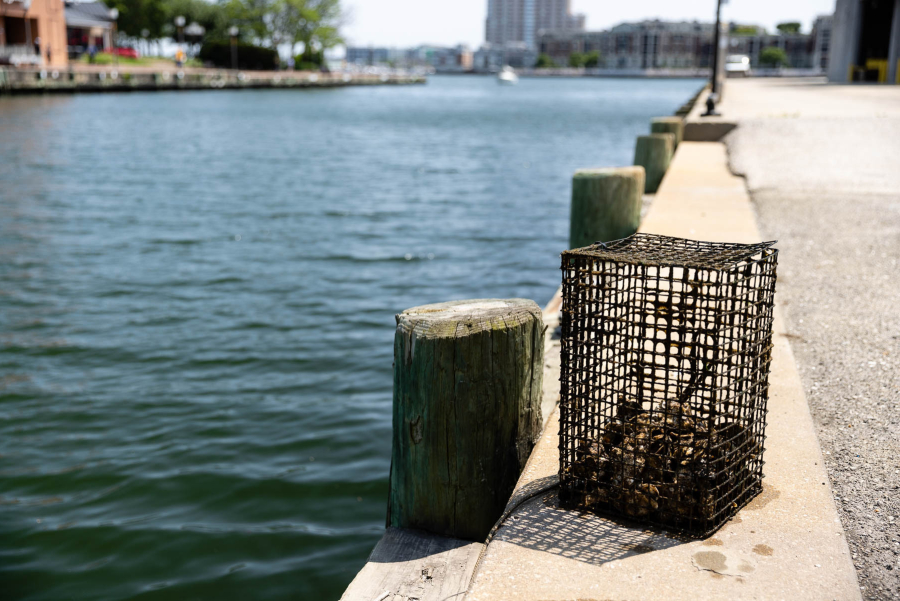
Though you’d never know it, the promenade from the Inner Harbor to Fells Point is lined with over 120 underwater oyster cages where baby oysters grow. The cages are part of The Great Baltimore Oyster Partnership, a collaboration between the Waterfront Partnership and the Chesapeake Bay Foundation, in which juvenile oysters grown at the University of Maryland Center for Environmental Science’s (UMCES) Horn Point Laboratory, are placed in the water for nine months of the year and then moved farther out in the Patapsco River.
“They’ll stay here and filter the water for a little bit, but as they mature they want that saltier water,” said Anspach.
The Inner Harbor was once replete with oysters but the population crashed in the early 20th century due to overharvesting and disease. According to Anspach, the Inner Harbor once had over 60 oyster canning factories. Today there are none.
The only way to identify the oyster cages is by the ropes hanging from sides of the pier. People are not permitted to touch or hoist up the cages, but the Chesapeake Bay Foundation does host volunteer events to those who want to help clean the cages and see some growing oysters.
Native Plant Gardens
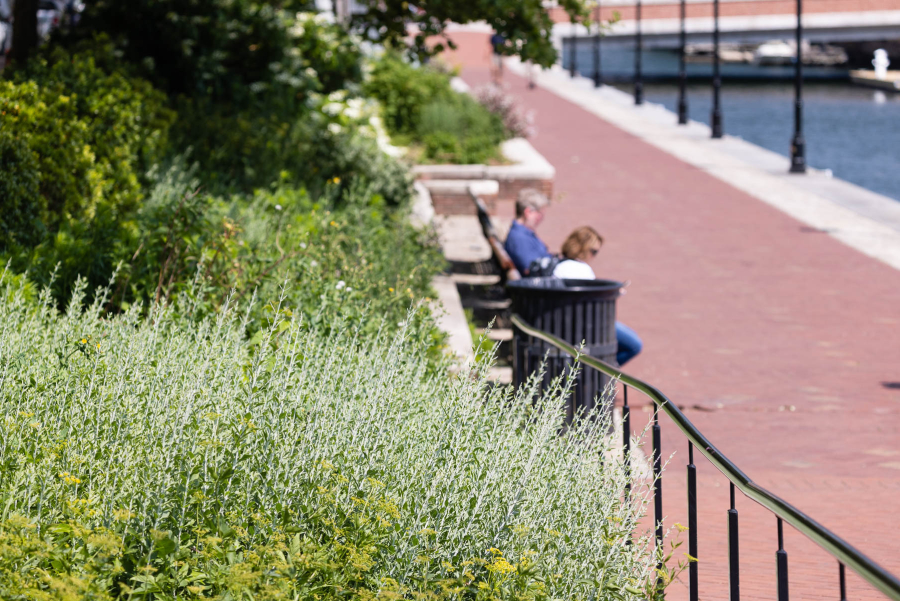
Tucked into the beautiful promenade running west of the Inner Harbor are multiple native plant gardens maintained by the Waterfront Partnership. The plants in these gardens reduce stormwater runoff and provide habitat for birds, bugs and other pollinators. But they also go a long way in making the waterfront feel more vibrant.
“In urban areas, people are really pushing for that greenscape,” said Anspach.
On the Harbor East promenade, starting just after the Under Armor Brand House, you’ll find a roughly 100-foot garden overflowing with native flowers and plants. Pierce’s Park, a small greenspace outside the UMCES Institute of Marine and Environmental Technology
building, also has a large, cereal bowl-shaped garden. Both of these sites have a mix of native plants, including milkweed, which attracts the threatened monarch butterfly.
Bug hotels
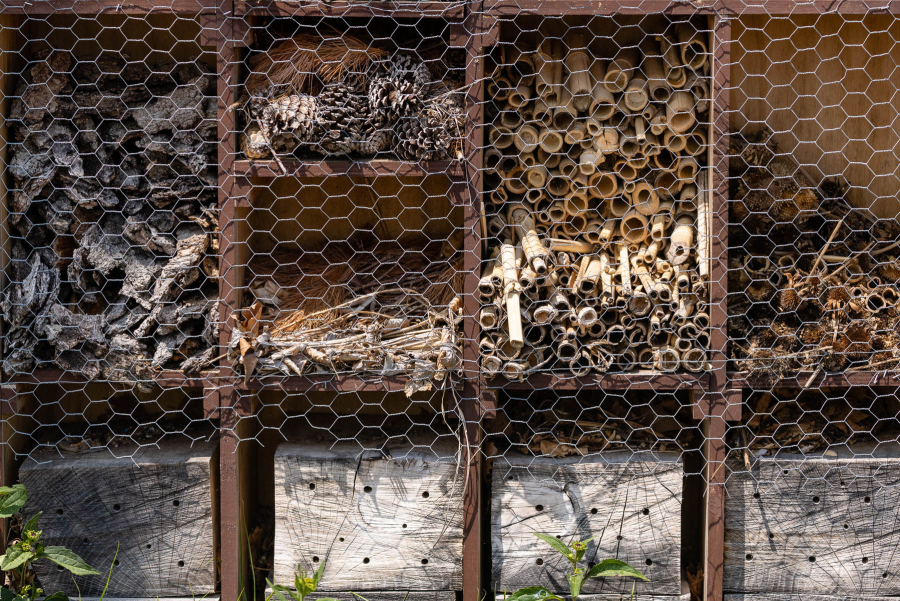
It’s not just out-of-towners who can check in at a waterfront hotel—bugs are welcome, too! At the native plant gardens at Pierce's Park and Harbor East there are also “bug hotels” that were built by Baltimore city youth enrolled in the Living Classroom Foundation’s Fresh Start program.
The hotels are essentially wooden boxes stuffed with forest debris that mimics habitat that insects would find in the wild. They include pinecones for ladybugs, bark for beetles and spiders, and bamboo and wood for nesting bees.
“You can use any type of natural debris, really,” said Anspach.
These insects are important to have around because they pollinate plants, keep pests in check and serve as food for other wildlife like birds, who live in and migrate through Baltimore during the year.
Turtle island
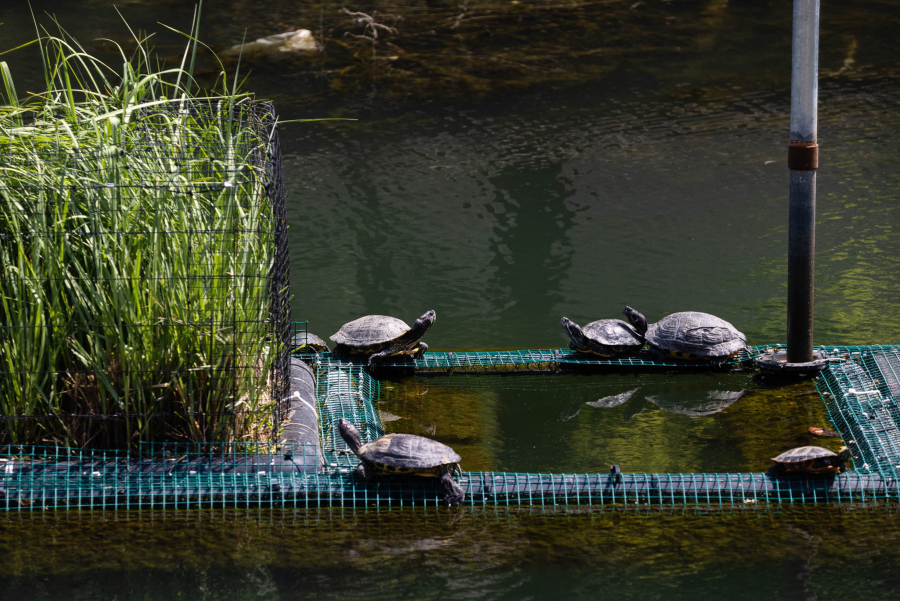
Now we come to the pièce de résistance: turtle island. A few years back, staff from the Waterfront Partnership and National Aquarium started noticing turtles sunbathing on a broken, plastic boom floating in Lancaster Canal, near the intersection of S. Caroline and Lancaster Streets. Inspired by the visitors, the two organizations partnered with Living Classrooms Foundation and the engineering firm Clearwater Mills to build a larger, steadier platform for the cold-blooded critters to use.
“After hibernation the turtles need to warm up they’re internal organs,” said Anspach.
Most of the turtles using the island are red eared sliders, which is an invasive species that people keep as pets. But Anspach says she’s also seeing red-bellied cooters, a slightly larger turtle that is native to Maryland and Virginia. The organizations aren’t exactly sure why the turtles like this canal so much, but are hoping to eventually do a study to find out why.
Completing the tour
All said, you can walk between the harbor habitats in about 30 minutes. What the Waterfront Partnership is ultimately trying to accomplish with these habitats is to get people to start thinking about the environmental aspects of the Inner Harbor and not just its commercial appeal. As Anspach said, “creating that shock and awe of seeing life in the harbor.”
The organization hosts recreation events such as the Baltimore Flotilla, in which hundreds of people paddle across the water, and recently unveiled a plan for a network of water trails and access points for paddlers in the Inner Harbor and Middle Branch.
The Waterfront Partnership’s annual report card shows that while much work still needs to be done, particularly in addressing Baltimore’s sewer system, the water is much cleaner than it was just 10 years ago. Slowly, but surely, the area is bouncing back with both people and wildlife showing up to enjoy it.

Comments
There are no comments.
Thank you!
Your comment has been received. Before it can be published, the comment will be reviewed by our team to ensure it adheres with our rules of engagement.
Back to recent stories